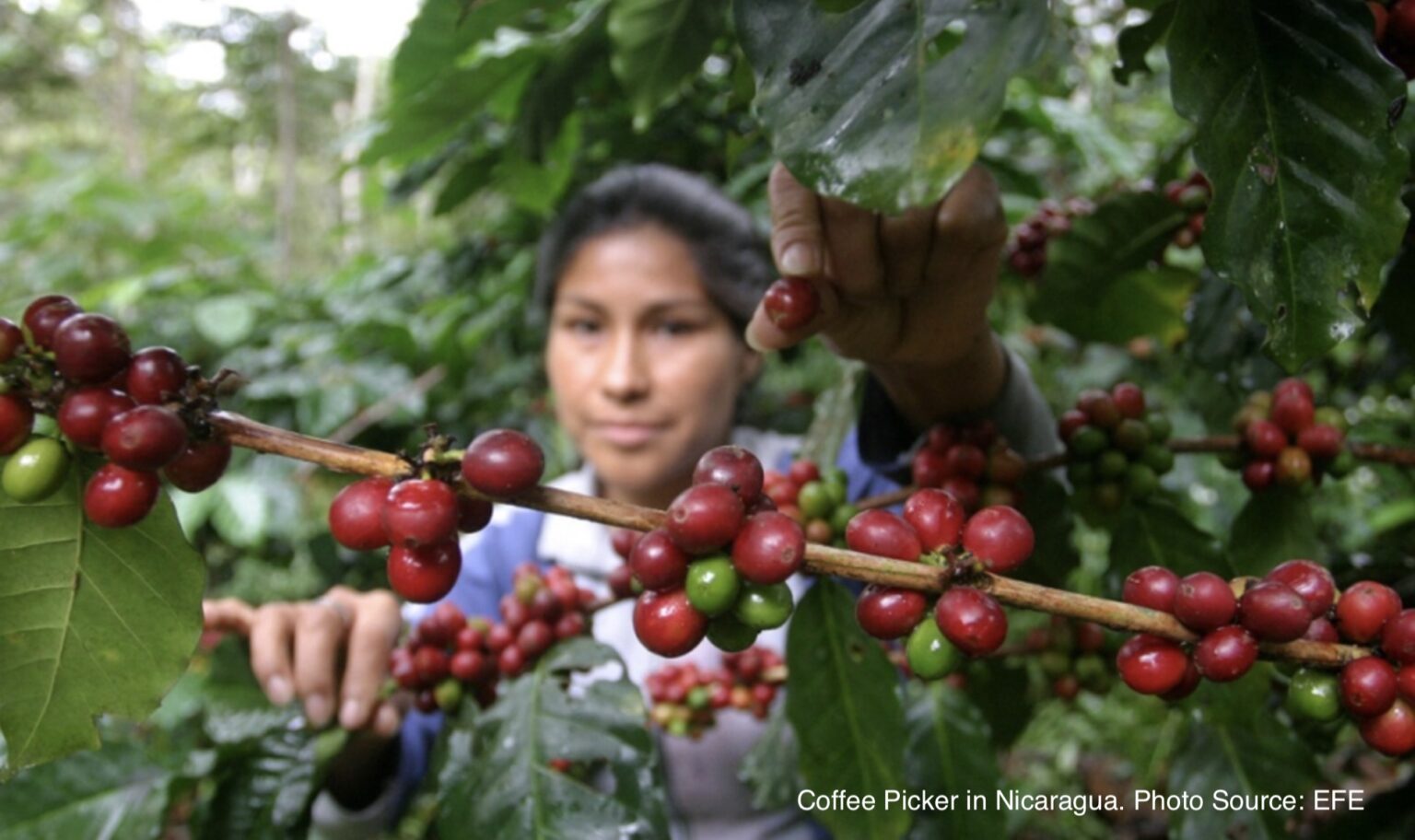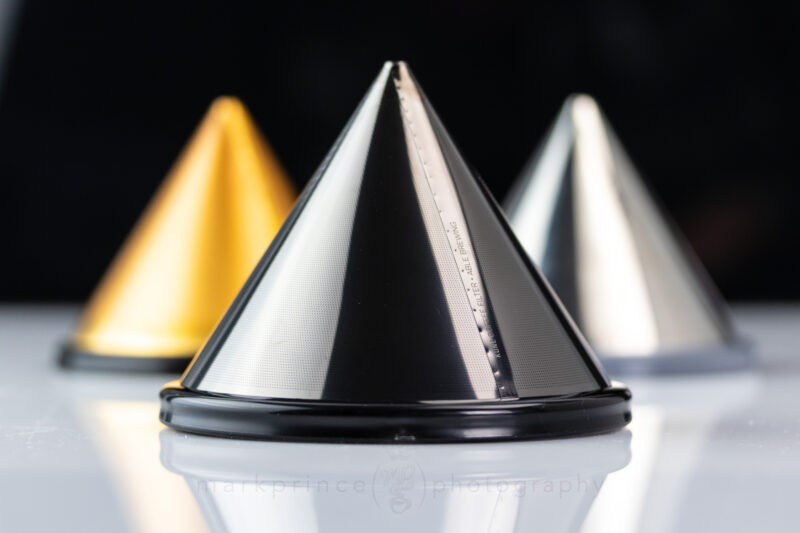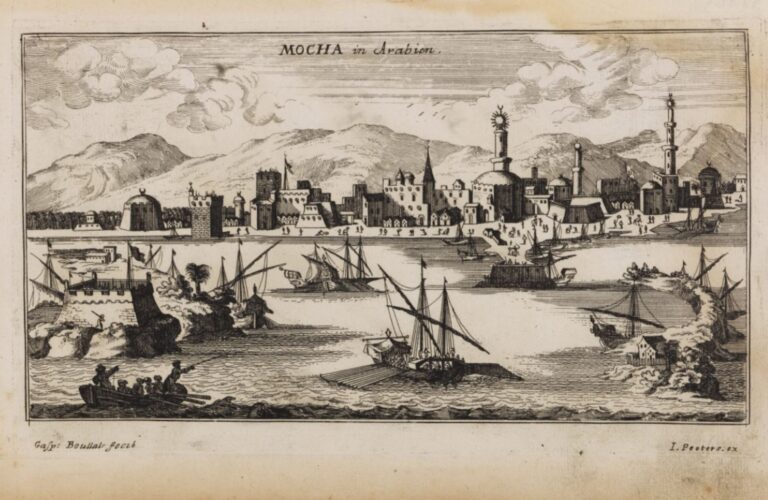The history and status of Nicaraguan specialty coffee is a fascinating tale of resilience, strife, innovation, and quality. Nicaragua, known as the “Land of Lakes and Volcanoes,” boasts a long-standing tradition of coffee cultivation that in the last three decades has gained true specialty coffee status. In this post, we’ll delve into the varied history of Nicaraguan coffee, and examine its current standing in the global coffee industry.
Origins of Coffee in Nicaragua
The introduction of coffee to Nicaragua can be attributed to German immigrants who settled in the country around 1850. These immigrants brought with them the knowledge and expertise in coffee cultivation and processing, which laid the foundation for the coffee industry in Nicaragua.
The favorable climate and fertile volcanic soil in Nicaragua proved to be ideal for coffee cultivation. The high-altitude regions of the country, such as Matagalpa and Jinotega, offered excellent conditions for growing Arabica coffee, which even back then was recognized as the premier type of coffee. As the coffee plantations expanded, Nicaragua soon became recognized as a prominent coffee-producing nation.
During the late 19th and early 20th centuries, coffee became a major export crop for Nicaragua, contributing significantly to its economy. Small-scale farmers and large estates alike focused on cultivating coffee as it offered a lucrative source of income. The industry continued to flourish, with advancements in technology and infrastructure facilitating efficient processing and transportation of the coffee beans to increasingly global markets.
Political and Social Unrest Period
Political and social upheaval in Nicaragua starting in 1979 had a devastating impact on the country’s coffee industry. Prior to 1979, specialty coffee pioneers were frequently seeking out top shelf Nicaraguan coffees to introduce to their customers. Nicaraguan coffees often occupied the same shelf space as the top coffees from Costa Rica, Colombia, and Ethiopia. However, the civil war and political instability that ensued almost destroyed the industry in Nicaragua.
The Sandinista revolution, which toppled the Somoza regime in 1979, brought about a radical shift in Nicaragua’s political landscape. The government’s focus shifted away from the coffee industry, and resources were redirected towards social and military programs. This led to neglect and mismanagement of coffee farms, resulting in a decline in productivity and quality.
Moreover, the United States imposed heavy economic sanctions on Nicaragua, further exacerbating the crisis. With limited access to international markets and capital, the coffee industry suffered from a lack of investment, technology, and infrastructure.
Additionally, the civil war caused widespread violence and disruption, forcing many coffee farmers to abandon their land and flee the country. The exodus of skilled labor and the destruction of infrastructure was just another nail in the coffee to the specialty coffee industry in Nicaragua.
Re-Emergence of Specialty Coffee in Nicaragua
It took years for Nicaragua’s coffee industry to recover from the turmoil of the 1970s and 1980s. The country had to rebuild its infrastructure, attract foreign investment, and reestablish relationships with international buyers.
In the mid 1990s, Nicaragua underwent a process of economic liberalization and stabilization, which led to the revival of the coffee industry. Small-scale farmers, known as “cafetaleros,” played a crucial role in the recovery, as they took up the task of rehabilitating abandoned plantations and reestablishing coffee production. This grassroots effort laid the foundation for the re-emergence of specialty coffee in Nicaragua.
As an aside, what exactly do we mean by “specialty coffee”? This term refers to coffee that is of exceptional quality and is graded above standard commercial coffee. It is produced with meticulous care, from the cultivation of the coffee plants to the harvesting, processing, and roasting stages. The specialty coffee movement emphasizes the unique characteristics of coffee beans, including their flavor profiles, aroma, acidity, body, and aftertaste.
The coffees Nicaragua produced prior to the upheaval of the 1980s may not have been officially labelled as “specialty coffee”, but their fantastic growing conditions and attention and care to the process delivered excellent coffees in that era. But by the late 1990s, “specialty coffee” had a new, much more official meaning in the world of commercial coffee. And Nicaragua was well on the way to joining that exclusive club.
Farmers and coops in Nicaragua already had the terroir: the micro climates, volcanic soils, excellent rain and wind patterns, perfect altitudes for growing coffee. By the late 1990s, they brought in sustainable and environmentally friendly farming practices and much more specialized processing methods. All of these efforts helped to elevate Nicaraguan coffee’s specialty status.
The growth of the specialty coffee industry in Nicaragua has been supported by various initiatives and organizations. The Specialty Coffee Association of Nicaragua (ACEN) plays a vital role in promoting and advancing the country’s specialty coffee sector. ACEN organizes events, workshops, and competitions that bring together coffee farmers, roasters, and enthusiasts, fostering knowledge sharing and collaboration within the industry.
Moreover, direct trade and fair trade practices have also contributed to the success of Nicaraguan specialty coffee. Direct trade allows coffee farmers to establish direct relationships with buyers, ensuring fair prices and fostering long-term partnerships. Fair trade certification ensures that coffee is produced under equitable conditions, benefiting small-scale farmers and promoting sustainable practices.
Then there’s the Cup of Excellence.
CoE Comes to Nicaragua
The Cup of Excellence competition, renowned as a prestigious event in the specialty coffee industry, traces its roots back to Brasil, where it all began in 1999. In 2001 Guatemala became the second country to host a Cup of Excellence competition. And one year later, in 2002, Nicaragua became the third country to hold the competition. This is very significant.
The Alliance for Coffee Excellence (ACE), as it is known today, believed it was crucial to set up in Nicaragua, to help the country’s re-emerging specialty coffee industry. More important, ACE thought the country was worthy of a CoE event.
The competition aimed to identify and reward the best coffees produced in Nicaragua, with the ultimate goal of connecting exceptional coffee farmers with specialty coffee buyers worldwide. The Cup of Excellence provided a platform for Nicaraguan coffee producers to gain recognition, access new markets, and command premium prices for the best beans. Perhaps most important, the CoE is designed to showcase and highlight small scale growers, encouraging other small scale farmers to seek excellence in their products.
During the Cup of Excellence competition, a panel of international judges conducted rigorous blind tastings to evaluate the coffee submissions. The winning coffees were designated as Cup of Excellence winners and auctioned off to the highest bidders, ensuring that farmers received fair prices for their exceptional beans.
The success of those annual CoE events in Nicaragua fostered the development of the competition in other coffee producing nations, with El Salvador joining the next year, followed by Honduras, Bolivia, Columbia, and Costa Rica in the next few years. Today, the Cup of Excellence competition is in thirteen countries, including Rwanda, Burundi, Mexico, Peru, and Ethiopia.
Nicaraguan Specialty Coffee Today
Today, specialty coffee in Nicaragua continues to gain recognition and acclaim in the global coffee industry. It is not without challenges. There remains branches of social unrest, and the USA still has a series of sanctions and restrictions on trade with the country, though nowhere near as punitive as those during the Reagan era.
For the coffees, they regularly receive high ratings and accolades in international coffee competitions, further establishing Nicaragua’s position in the specialty coffee market. CoE competition coffees from Nicaragua are particularly desired in the specialty coffee marketplace.
I haven’t even talked about flavor profiles yet of Nicaraguan coffees, and there’s a reason for that. The widely varying micro climates and terroir conditions in Nicaragua produce a very wide gamut of flavor notes and profiles. Some coffees taste like clones of the best offerings from Costa Rica, with bright citrus acidity and floral notes. Some taste like chocolate and nut rich Colombians. Some, depending on how they are processed, taste like the fruity, low acidity, “fermented” styles of some notable Ethiopians.
Basically, it’s trust your roaster and their tasting notes when buying Nicaraguan coffees. Because you can get the world’s coffee taste all from the same country.
Footnotes:
- Smith, John. “A Brief History of Nicaraguan Coffee.” Coffee Journal, vol. 45, no. 2, 2010.
- Rodriguez, Maria. “Revitalizing Nicaragua’s Coffee Industry: A Case Study of Sustainable Development.” Journal of Agricultural Economics, vol. 68, no. 4, 2015.
- Gomez, Luis. “Exploring the Flavor Profiles of Nicaraguan Specialty Coffee.” Coffee Research Quarterly, vol. 23, no. 1, 2018.
- Perez, Carlos. “The Impact of Direct Trade Relationships on Nicaraguan Coffee Farmers.” International Journal of Coffee Studies, vol. 37, no. 3, 2022.
Zuzanna travels the world because of her job, and makes it a point to find the best cafes, best coffee, best espresso in every city, town, or village she visits.
-
Zuzanna Kaminskihttps://coffeegeek.com/author/zussyk/April 16, 2024
-
Zuzanna Kaminskihttps://coffeegeek.com/author/zussyk/March 20, 2024
-
Zuzanna Kaminskihttps://coffeegeek.com/author/zussyk/March 15, 2024










































One Response
Similar to what happened in Indonesia, coffee farmers have experienced an abundant coffee harvest.